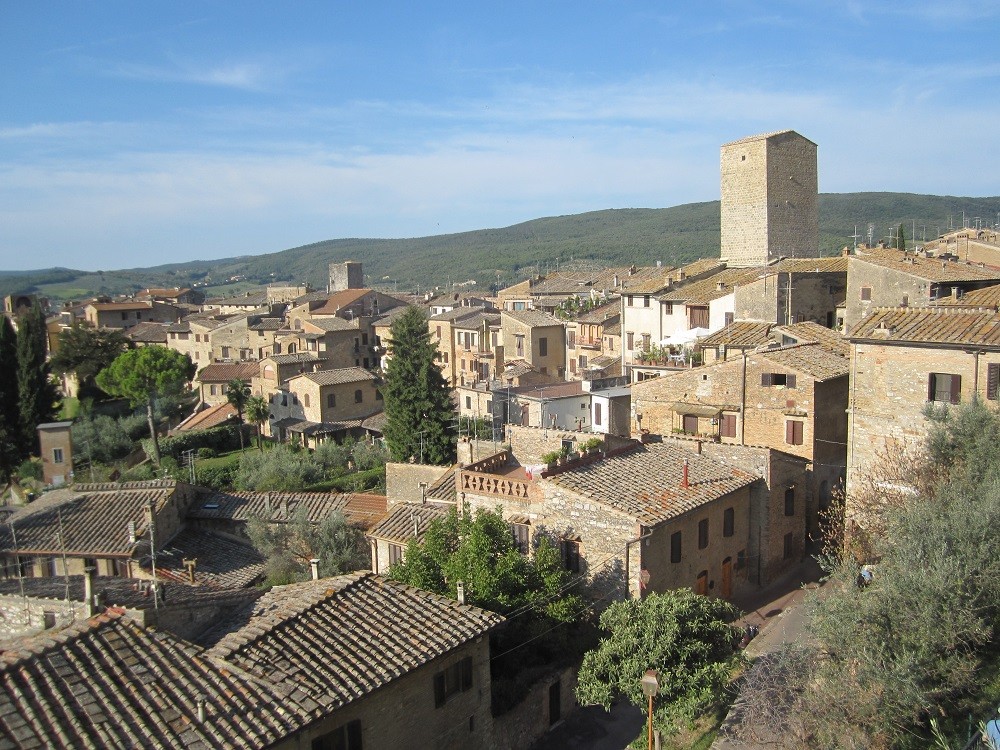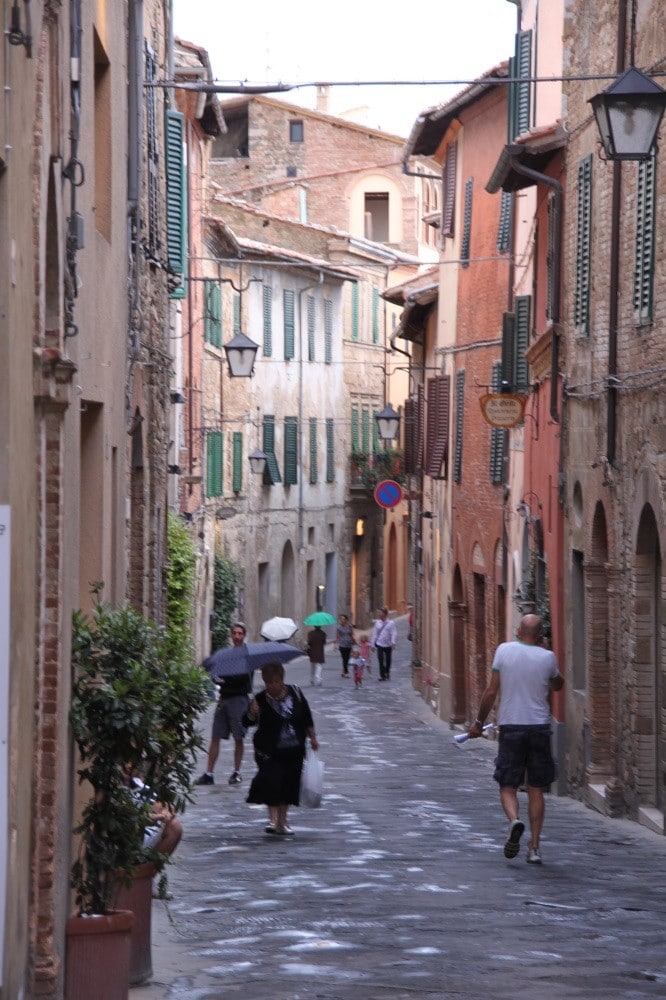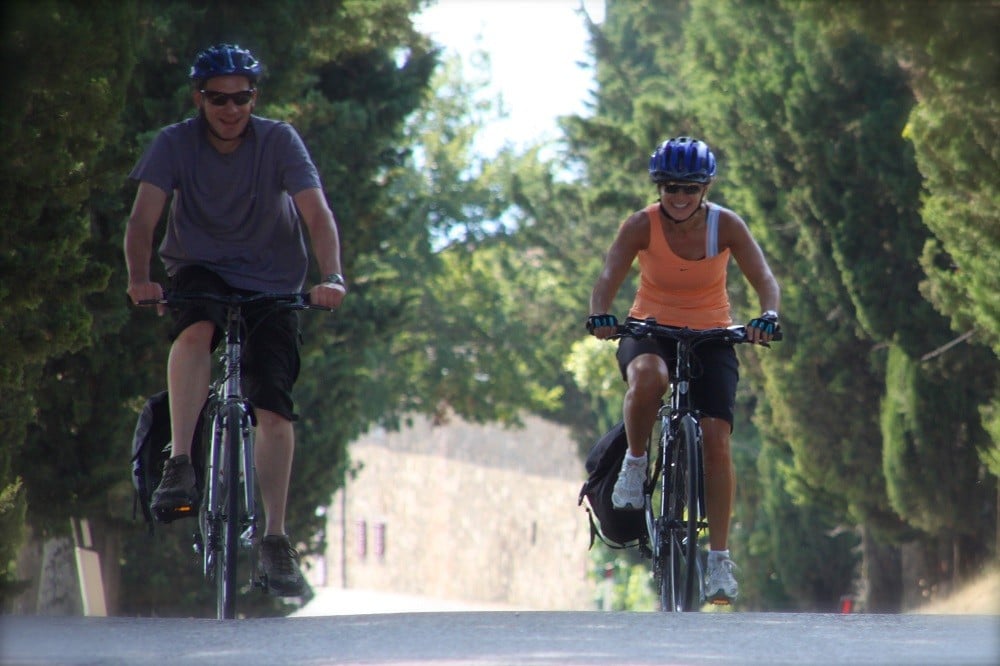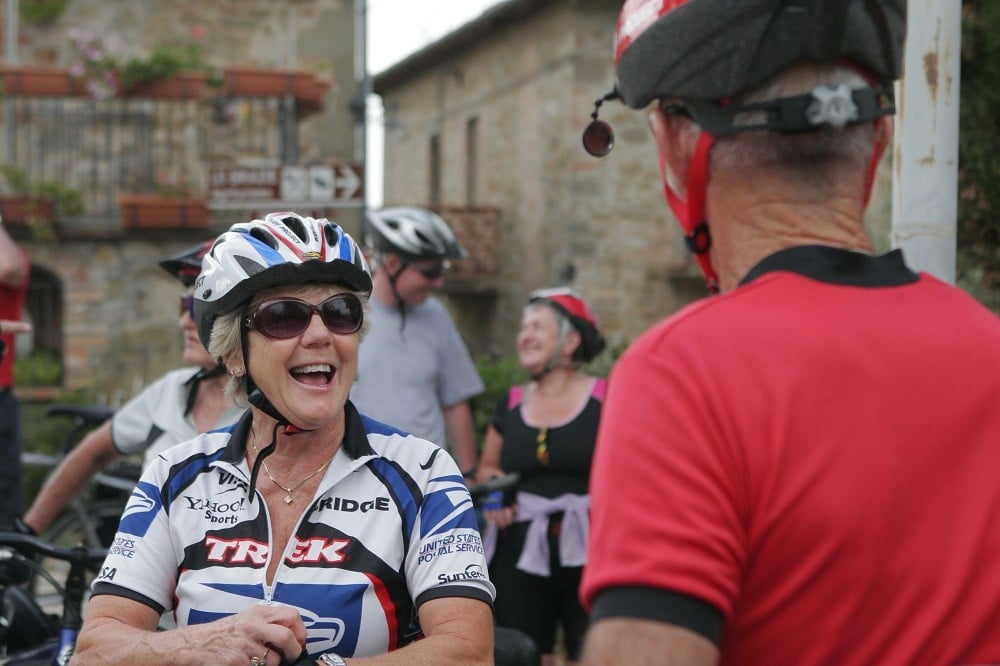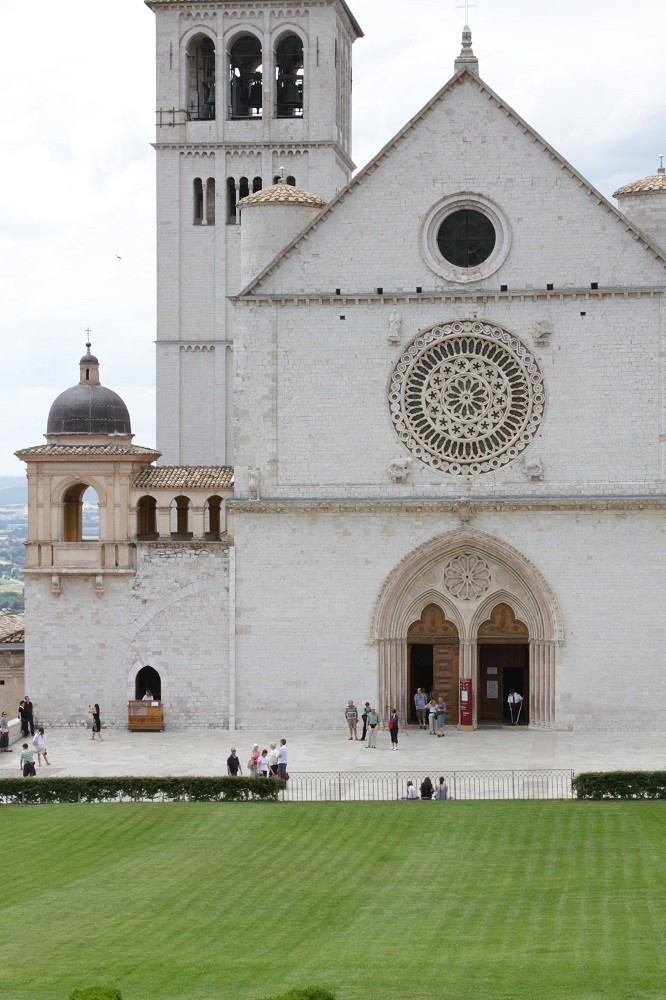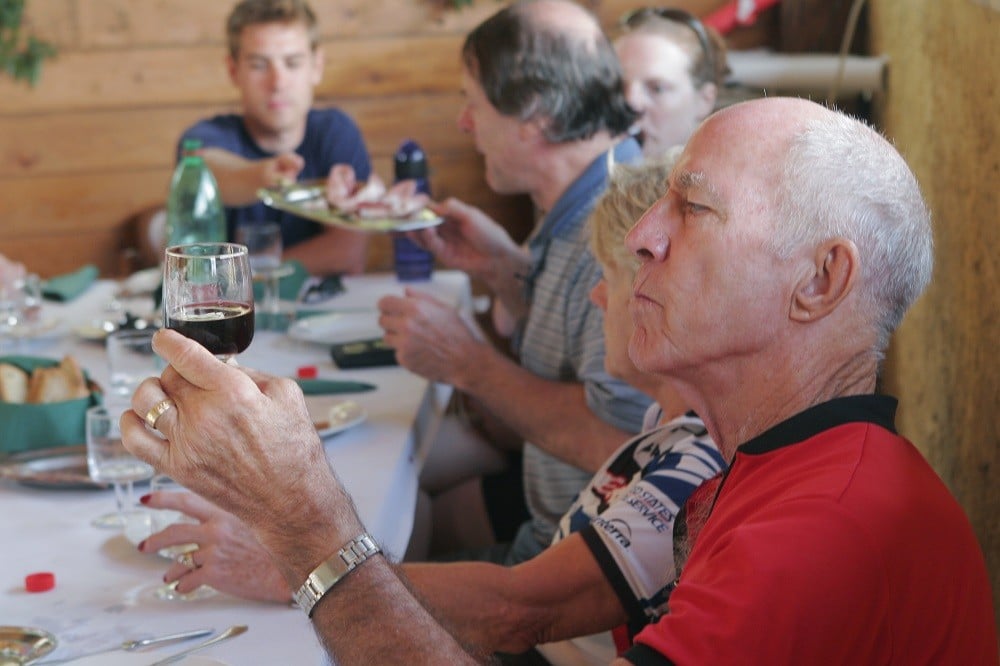Cycling holidays in Italy
Cycling in Italy is a different experience to France. The drivers are nothing like as bad as their reputation – I’ve cycled a lot in Italy, and it’s simply rubbish. But the roads are less formal, put politely a bit more rustic.
We offer cycling holidays in Italy, with tours in both Tuscany and Umbria. The scenery is spectacular in both regions. I think it’s more beautiful than anywhere we cycle in France – unfortunately that’s partly because there is always a backdrop of mountains! We don’t have to cycle up any mountains, but both regions are a bit hilly, despite all our efforts to research routes that minimise the climbs.
One distinct feature of both Umbria and Tuscany are the hilltop towns. Yes, that means we have to cycle up hills to get to them, but they are gorgeous. Perugia was a major Etruscan city before the Roman Empire; Roman Perugia was built on top of it, and the stunning Renaissance Perugia that we can see today sits on top of both of them. And with a bit of exploration you can see all of it.
We find this everywhere, in Cortona, in Orvieto, and even more so in the spectacular little-known towns of Sorano, Sovana and Pitigliano from where we start our Umbria Cycling Holidays. But the dominant architecture visible today are the fantastic buildings and streets of Renaissance Italy. In San Gimignano, Siena, Montalcino, Montepulciano, it’s like stepping back 400 years into cities that would be recognisable to Danté and Machiavelli. And the most striking symbol of this are the mighty Duomo that we find in every City, beautiful buildings brightly painted, often featuring frescos, always fascinating.
“Whisper it ... Italian food is even better than French food!”
The food is also distinctive and different to France. I once read a good piece of advice about eating in Italy: ‘Just find a restaurant where the menu hasn’t been translated, and you won’t go wrong’. This echoes my experience. Italy is a much kinder place for vegetarians! The freshness of the food, the vegetables and the fruit, the oils and herbs. I’m afraid, as a lifelong Francophone, the food in Italy is better. The atmosphere helps – it’s less formal. Often, on our Italian trips, the owner or the chef will just chat about the likes and dislikes of the people in our group, and food just starts to appear. An hour and a half later, with everyone full to bursting, the owner will send a waiter to ask what we’d like for ‘primo’ and ‘secondo’! Bliss. -
Exploring the Wines of Tuscany and Umbria.
The story of Tuscan and Umbrian wines is much more interesting than most people realise before they visit.
We’ve all heard of Chianti, but the fun is not in learning about the regulations governing Chianti, but in discovering wines you might never have heard of, like the Vernaccia di San Gimignano. Tuscany also boasts world-famous wines, the elegant Vino Nobile di Montepulciano and the famous Brunello di Montalcino, widely regarded as Italy’s finest wine (and priced accordingly!).
In Umbria we’ll discover white wines like Orvieto Classico, and at the other end of the scale the full-bodied Sagrantino wines of Montefalco.
Italian wines were less exported than their French cousins, thus less well-known, and historically skulduggery helped dent their reputation. That’s unworthy, Tuscany and Umbria boast fantastic and interesting wines these days, and it would be our privilege to help you explore them.
Tour options

